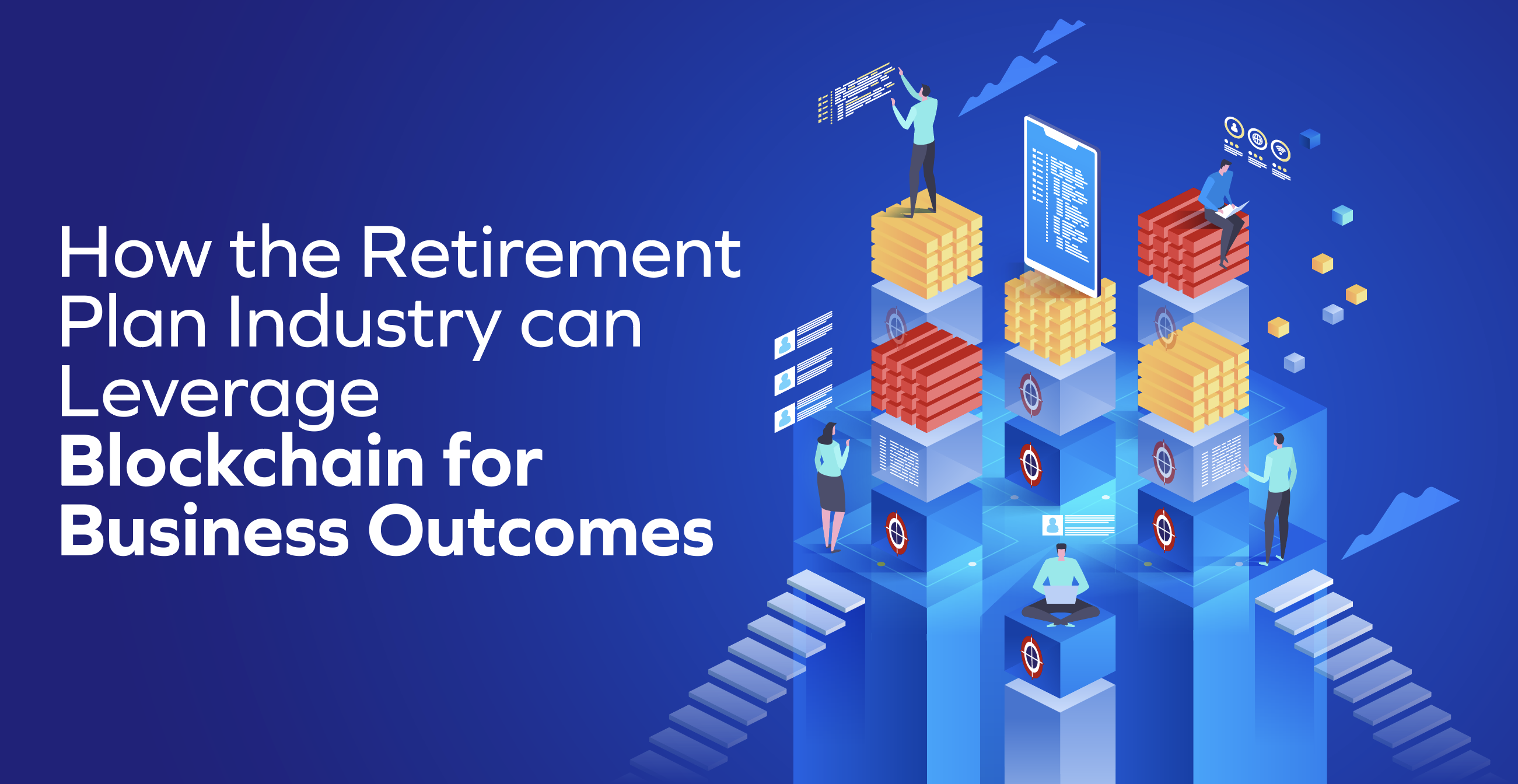
Security, ledgering, customer experience and more — we explore what blockchain can do in part five of Congruent’s series on technology trends shaping the retirement plan industry.
Ever since defined contribution (DC) plans became mainstream, 401(k) has grown to be the go-to retirement strategy. But the ecosystem is far from straightforward, with participant data processed across several levels like plan sponsors, record-keepers, asset managers, third-party administrators, insurers, government agencies and more.
We invited Michelle Steele, VP of Customer Experience at OneAmerica; Jamie McInnes, President and CEO of Oculus Partners; Anu Mandava, Head of Architecture at CUNA Mutual Group and Chandrasekaran Vaidyanathan (VC), co-founder and head of strategy at Congruent to explore, among other things, if blockchain is a viable technology investment for the retirement plan industry.
The sheer amount of data that gets generated across all the processes is mind-boggling. Yet, there is no national registry that tracks all the 401(k) plans or pension accounts. “The problem is rollover. When participants move from one place to another, transferability of savings is an intensive process — for both users and providers,” says VC of Congruent.
So, when employees change companies/sponsors, there is not an easy way to track their funds accurately. There is no automated system to ensure efficient rollovers to the new funds either. “Some of these can be addressed by blockchain. You can build an ecosystem that collaborates closely,” he adds.
Unless you have been living under the proverbial rock, you would have heard about blockchain. In the next couple of years, the blockchain market is projected to grow by over $8 billion globally. The pertinent part of this observation for us is that this growth will be driven by the BFSI sector. “There are two solid reasons that make blockchain perfect for the retirement industry — Security and immutability,” says VC.
In this article, we seek advice from our experts on what blockchain can do and how you can apply it to your needs.
Efficient participant ledgering
To help plan sponsors and participants wade through millions of data files, shared across multiple parties, blockchain experts propose a system of plan participant identifiers. With unique identities, plan sponsors and participants can single out their asset data instantly and process decisions more effectively. They can also cross-link data across multiple parties and cross-reference them when in need.
“People typically associate cryptocurrency with blockchain. There’s a lot more the technology can do. At Congruent, we are working on participant ledgering with blockchain. We want to build a technology demonstrator that makes blockchain more palatable in the industry. We’re excited,” says VC.
Data security
One of the biggest threats in digitizing retirement planning is that the participants’ assets — most importantly immutable data assets — are prone to cyberattacks. The overall system of several levels of data transaction amidst multiple parties makes it difficult for plan sponsors to develop a unified, end-to-end cybersecurity strategy.
The fundamental tenet of blockchain is its data immutability — once stored, it cannot be altered or counterfeited. The technology also allows thorough encryption, adequate cross-referencing and nodal connections making it incredibly difficult to hack concurrent nodes simultaneously to retrieve data.
Democratization of data
The world of financial services, despite serving citizens, is heavily guarded by experts in the industry who have little in common with the end-users. Yet, participants trust them with their assets, becoming a passive player in their own retirement planning. They usually do not have a lot of say on how their data is recorded, maintained, and communicated across.
Blockchain promises to break the ice and foster collaboration. The technology allows increased and transparent collaboration among all levels without comprise on the security. Therefore, plan administrators and sponsors can empower participants with control over handling their data across all levels.
While blockchain promises great strides in delivering a hassle-free retirement planning experience, the technology is still in the nascent stages of implementation in the industry. As a strong contender for the future of tech, the talents to implement blockchain tech for your company can also prove to be scarce and costly. “The adoption of blockchain is not going to be quick and easy. I think people need to understand its applications. And it’s not going to be one giant application. There are going to be smaller applications on the trust side or trading side,” recommends VC.
